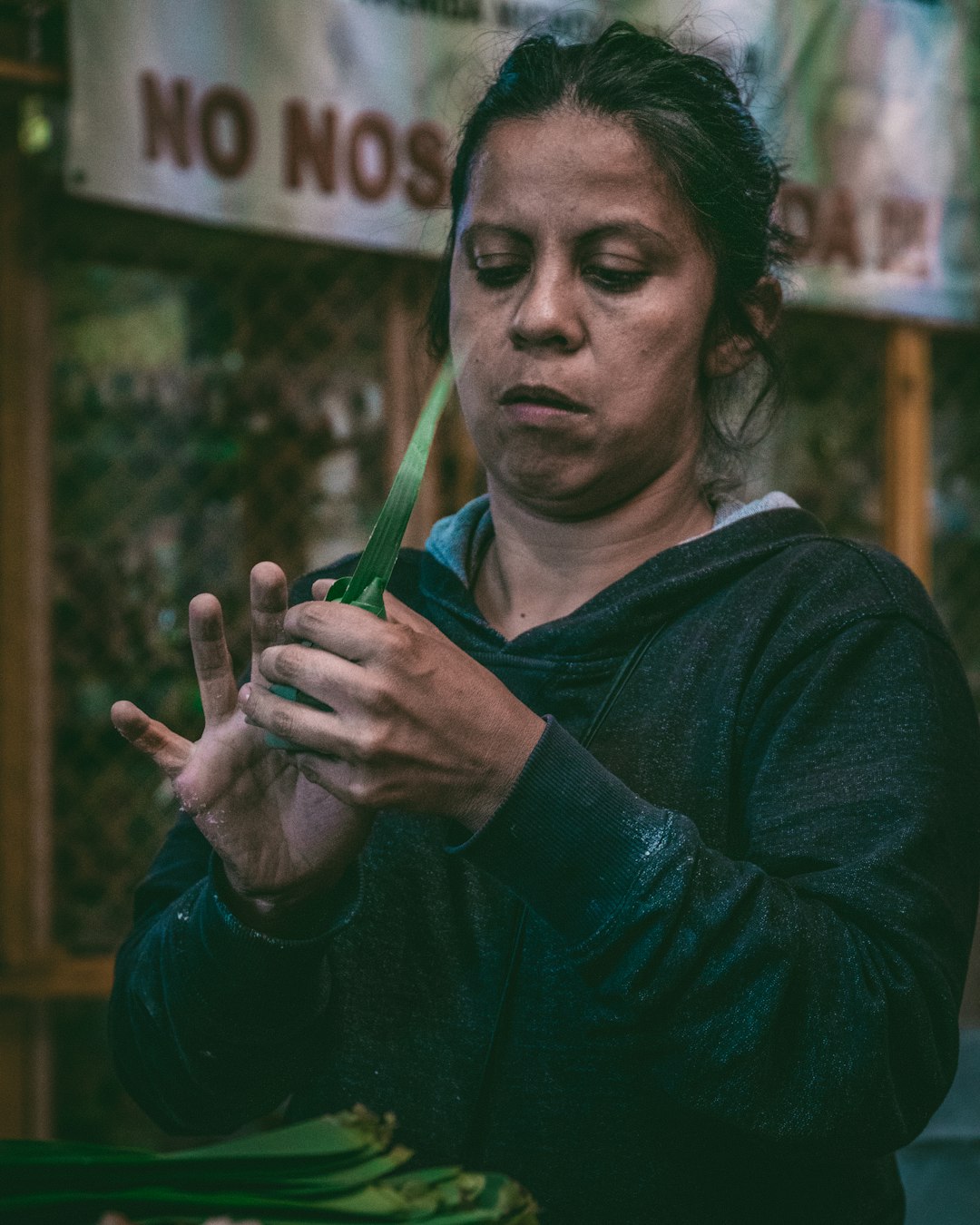Support our educational content for free when you purchase through links on our site. Learn more
How to Say “My Name Is” in Spanish Female: 9 Must-Know Phrases (2025) 🎉
Have you ever stumbled trying to say your name in Spanish, wondering if there’s a special way for females to introduce themselves? Spoiler alert: there isn’t a gender-specific phrase, but mastering the nuances can make your introduction sound authentic and confident! Whether you’re meeting new friends, attending a formal event, or just want to impress your Spanish-speaking colleagues, knowing the right phrases and cultural tips is a game-changer.
In this article, we’ll unravel the mystery behind “Me llamo” vs. “Mi nombre es,” explore pronunciation secrets, and reveal cultural etiquette that will have you introducing yourself like a native. Plus, we’ll share popular female Spanish names and insider tips to avoid common pitfalls. Ready to unlock your Spanish introduction superpowers? Let’s dive in!
Key Takeaways
- “Me llamo” and “Mi nombre es” are the go-to phrases for saying “My name is” in Spanish, and they work perfectly for females.
- Pronunciation and cultural context matter: mastering these will boost your confidence and help you avoid awkward moments.
- Formal vs. informal language: knowing when to use “tú” or “usted” can make a big difference in how you’re received.
- Cultural customs like greetings vary across Spanish-speaking countries—be prepared for handshakes, kisses, or hugs!
- Practice with trusted resources like Rosetta Stone and Babbel to perfect your introductions and pronunciation.
👉 Shop Spanish Learning Tools:
- Rosetta Stone Spanish Course: Amazon | Official Site
- Babbel Spanish App: Amazon | Official Site
Table of Contents
- ⚡️ Quick Tips and Facts: Your Instant Guide to Spanish Introductions
- 📜 The Linguistic Journey: Unpacking “Me llamo” and Spanish Self-Introductions
- 🗣️ Mastering “Me llamo”: Your Essential Phrase for “My Name Is” in Spanish
- 🤔 “Mi nombre es” vs. “Me llamo”: Is There a Gender Twist for Females?
- 🤝 Formal vs. Informal: Choosing the Right “You” When Saying Your Name
- 🎶 Pronunciation Perfection: How to Sound Authentic When You Say Your Name
- 🚧 Common Pitfalls: Blunders to Avoid When Introducing Yourself in Spanish
- 💬 Beyond “Me llamo”: Asking Names and Introducing Others Like a Pro
- 💃 Cultural Charms: Navigating Introductions in Spanish-Speaking Worlds
- ✨ Popular Spanish Female Names: A Glimpse into Hispanic Identity
- 💪 Practice Makes Perfect: Building Confidence in Your Spanish Introductions
- 🌟 Conclusion: Your Confident Spanish Introduction Awaits!
- 🔗 Recommended Resources: Keep Learning!
- ❓ Frequently Asked Questions About Spanish Introductions
- 📚 Reference Links: Our Sources & Further Reading
Quick Tips and Facts: Your Instant Guide to Spanish Introductions

To introduce yourself in Spanish, you can use the phrases “Me llamo” or “Mi nombre es” followed by your name. For example, “Me llamo” (pronounced “Meh yah-moh”) is a casual way to say “My name is,” while “Mi nombre es” (pronounced “Mee nohm-breh es”) is a more formal introduction.
According to SpanishDict, a reliable source for Spanish language learning, the phrase “Me llamo” is derived from the verb “llamarse,” which means “to call oneself.” You can use this phrase in casual settings, such as when meeting new people or introducing yourself to a group.
Essential Phrases for Spanish Introductions
Here are some essential phrases to get you started:
- “Hola, me llamo” (Hello, my name is)
- “Mi nombre es” (My name is)
- “Soy” (I am)
- “¿Cómo te llamas?” (What’s your name?)
- “Encantado/Encantada” (Nice to meet you)
You can practice these phrases with the Rosetta Stone app, which offers interactive lessons and real-world examples to help you learn Spanish.
For more information on Spanish introductions, you can visit our Spanish Vocabulary page, which offers a wealth of resources and tips on learning Spanish.
The Linguistic Journey: Unpacking “Me llamo” and Spanish Self-Introductions

When introducing yourself in Spanish, it’s essential to understand the nuances of the language. The phrase “Me llamo” is a common way to say “My name is,” but it’s not the only option.
According to BBC Languages, “Me llamo” is a casual introduction that can be used in informal settings. However, in more formal situations, you may want to use “Mi nombre es,” which is a more formal way to introduce yourself.
The Importance of Pronunciation
Pronunciation is crucial when introducing yourself in Spanish. Make sure to practice the correct pronunciation of “Me llamo” (Meh yah-moh) and “Mi nombre es” (Mee nohm-breh es). You can listen to native speakers on Forvo to get a better sense of the correct pronunciation.
For more information on Spanish pronunciation, you can visit our Spanish Language Learning page, which offers tips and resources on improving your Spanish skills.
Mastering “Me llamo”: Your Essential Phrase for “My Name Is” in Spanish
To master the phrase “Me llamo,” it’s essential to practice regularly. You can start by practicing the phrase in front of a mirror, recording yourself, or speaking with a language exchange partner.
According to Duolingo, a popular language learning app, practicing with native speakers is an excellent way to improve your pronunciation and build confidence in your Spanish skills.
Tips for Practicing “Me llamo”
Here are some tips for practicing “Me llamo“:
- Practice the phrase in front of a mirror to work on your pronunciation and body language.
- Record yourself saying the phrase and listen to the recording to identify areas for improvement.
- Speak with a language exchange partner or tutor to practice your conversation skills.
For more information on practicing Spanish, you can visit our Spanish Conversation Practice page, which offers tips and resources on improving your conversation skills.
“Mi nombre es” vs. “Me llamo”: Is There a Gender Twist for Females?
When introducing yourself in Spanish, you may wonder if there’s a gender twist for females. The answer is no – both “Me llamo” and “Mi nombre es” can be used by females and males alike.
According to SpanishPod101, a popular Spanish language learning podcast, the phrase “Me llamo” is a common way to introduce yourself, regardless of your gender.
Using “Me llamo” and “Mi nombre es” in Context
Here are some examples of how to use “Me llamo” and “Mi nombre es” in context:
- “Hola, me llamo” (Hello, my name is)
- “Mi nombre es” (My name is)
- “Soy” (I am)
For more information on Spanish introductions, you can visit our Spanish Cultural Insights page, which offers insights into Spanish culture and customs.
Formal vs. Informal: Choosing the Right “You” When Saying Your Name
When introducing yourself in Spanish, it’s essential to choose the right “you” – either “tú” or “usted.” The choice between “tú” and “usted” depends on the level of formality and the person you’re addressing.
According to StudySpanish, a comprehensive Spanish language learning resource, “tú” is used in informal settings, while “usted” is used in formal situations.
Using “Tú” and “Usted” in Context
Here are some examples of how to use “tú” and “usted” in context:
- “¿Cómo te llamas?” (What’s your name? – informal)
- “¿Cómo se llama?” (What’s your name? – formal)
For more information on Spanish formal and informal language, you can visit our Spanish Language Resources page, which offers a wealth of resources and tips on learning Spanish.
Pronunciation Perfection: How to Sound Authentic When You Say Your Name
To sound authentic when saying your name in Spanish, it’s essential to practice your pronunciation. You can listen to native speakers on YouTube or practice with a language exchange partner.
According to Babbel, a popular language learning platform, practicing with native speakers is an excellent way to improve your pronunciation and build confidence in your Spanish skills.
Tips for Improving Your Pronunciation
Here are some tips for improving your pronunciation:
- Listen to native speakers and try to mimic their pronunciation.
- Practice speaking with a language exchange partner or tutor.
- Record yourself and listen to the recording to identify areas for improvement.
For more information on improving your Spanish pronunciation, you can visit our Spanish Vocabulary page, which offers tips and resources on learning Spanish vocabulary.
Common Pitfalls: Blunders to Avoid When Introducing Yourself in Spanish
When introducing yourself in Spanish, there are some common pitfalls to avoid. One of the most common mistakes is using the wrong verb conjugation or pronunciation.
According to SpanishDict, a reliable source for Spanish language learning, it’s essential to practice regularly to avoid common mistakes.
Common Mistakes to Avoid
Here are some common mistakes to avoid:
- Using the wrong verb conjugation
- Mispronouncing words or phrases
- Using informal language in formal situations
For more information on avoiding common mistakes in Spanish, you can visit our Spanish Language Learning page, which offers tips and resources on learning Spanish.
Beyond “Me llamo”: Asking Names and Introducing Others Like a Pro
To take your Spanish skills to the next level, it’s essential to learn how to ask names and introduce others like a pro. You can use the phrase “¿Cómo te llamas?” (What’s your name?) to ask someone’s name.
According to Duolingo, a popular language learning app, practicing with native speakers is an excellent way to improve your conversation skills and build confidence in your Spanish skills.
1. How to Ask “What’s Your Name?” in Spanish
To ask someone’s name in Spanish, you can use the phrase “¿Cómo te llamas?” (What’s your name?). This phrase is informal, so make sure to use it in casual settings.
2. Introducing Someone Else in Spanish
To introduce someone else in Spanish, you can use the phrase “Te presento a” (I’d like to introduce you to). For example, “Te presento a mi amigo” (I’d like to introduce you to my friend).
For more information on introducing others in Spanish, you can visit our Spanish Conversation Practice page, which offers tips and resources on improving your conversation skills.
Cultural Charms: Navigating Introductions in Spanish-Speaking Worlds

When introducing yourself in Spanish-speaking countries, it’s essential to understand the cultural nuances of each country. For example, in some countries, it’s customary to use formal language when introducing yourself, while in others, informal language is more common.
According to Culture Trip, a popular travel and culture website, understanding the cultural nuances of each country is essential to navigating introductions like a pro.
1. The Handshake, The Kiss, The Hug: What to Expect
When introducing yourself in Spanish-speaking countries, you may encounter different greeting customs. For example, in some countries, it’s customary to shake hands, while in others, a kiss on the cheek is more common.
2. When to Introduce Yourself (and When Not To!)
When introducing yourself in Spanish-speaking countries, it’s essential to understand when to introduce yourself and when not to. For example, in formal situations, it’s customary to introduce yourself, while in casual settings, a simple “hola” (hello) may be enough.
For more information on cultural nuances in Spanish-speaking countries, you can visit our Spanish Cultural Insights page, which offers insights into Spanish culture and customs.
Popular Spanish Female Names: A Glimpse into Hispanic Identity
When introducing yourself in Spanish, it’s essential to understand the cultural significance of names. In Hispanic culture, names are often a reflection of family heritage and cultural identity.
According to Behind the Name, a popular website for baby names, understanding the cultural significance of names is essential to appreciating Hispanic culture.
For more information on Hispanic culture and names, you can visit our Spanish Cultural Insights page, which offers insights into Spanish culture and customs.
Practice Makes Perfect: Building Confidence in Your Spanish Introductions

To build confidence in your Spanish introductions, it’s essential to practice regularly. You can practice with a language exchange partner, tutor, or online language learning platform.
According to Babbel, a popular language learning platform, practicing regularly is an excellent way to improve your Spanish skills and build confidence in your introductions.
For more information on practicing Spanish, you can visit our Spanish Language Resources page, which offers a wealth of resources and tips on learning Spanish.
Conclusion: Your Confident Spanish Introduction Awaits!

Congratulations! You’ve just unlocked the secrets to confidently saying “My name is” in Spanish as a female — and so much more. Whether you choose the casual charm of “Me llamo” or the formal elegance of “Mi nombre es,” you now know there’s no gender barrier to these phrases. They work beautifully for everyone, no matter if you’re introducing yourself at a fiesta or a formal meeting.
Remember, pronunciation is your secret weapon. Practice makes perfect, so keep listening to native speakers, recording yourself, and chatting with language buddies. Don’t shy away from cultural nuances either — knowing when to use formal or informal language, and understanding greeting customs, will make your introductions not just correct but memorable.
If you’re ready to take the plunge, apps like Rosetta Stone and Babbel are fantastic companions, offering interactive lessons that bring your Spanish introductions to life. So go ahead, say it loud, say it proud: “Me llamo [Your Name]” — and watch doors open!
Recommended Links
Ready to practice and perfect your Spanish introductions? Check out these top-rated resources and products that Spanish Scholar™ recommends:
-
Rosetta Stone Spanish Course:
Amazon | Rosetta Stone Official Website | Walmart -
Babbel Spanish Learning App:
Amazon | Babbel Official Website -
“Practice Makes Perfect: Spanish Conversation” Book:
Amazon -
“Easy Spanish Step-By-Step” by Barbara Bregstein:
Amazon
Frequently Asked Questions About Spanish Introductions

How do you say my name is in Spanish for females?
Great news: there’s no gender-specific phrase! Both females and males say “Me llamo [Name]” or “Mi nombre es [Name]”. The verbs and phrases do not change based on gender. So, whether you’re María, Elena, or Carmen, your introduction stays the same.
What is the Spanish translation for introducing yourself as a female?
Simply use “Me llamo” or “Mi nombre es” followed by your name. For example:
- Me llamo Ana.
- Mi nombre es Lucía.
These are universally understood and appropriate for females.
How do Spanish females introduce themselves in a formal setting?
In formal contexts, females often use “Mi nombre es [Name]” or “Soy [Name]” to introduce themselves. Additionally, using formal pronouns like “usted” when asking or responding is polite. For example:
- Disculpe, mi nombre es Isabel.
- Soy Sofía, mucho gusto.
Adding “mucho gusto” (nice to meet you) or “encantada” (delighted) adds warmth and respect.
What are common Spanish phrases used for self-introduction for women?
Here are some go-to phrases:
- Hola, me llamo [Name].
- Soy [Name].
- Mi nombre es [Name].
- Encantada de conocerte. (Nice to meet you — female speaker)
- Mucho gusto. (Nice to meet you — gender-neutral)
Can I use the same introduction phrase in Spanish for both formal and informal settings as a female?
✅ Yes! “Me llamo” is versatile and widely accepted in both formal and informal situations. However, in very formal contexts like business or official events, “Mi nombre es” or “Soy” might sound more polished. Always consider your audience and setting.
How do I pronounce my name in Spanish with a female accent?
Spanish pronunciation doesn’t change based on the speaker’s gender, but intonation and tone might vary slightly. To sound authentic:
- Emphasize clear vowel sounds (a, e, i, o, u).
- Practice rolling your “r” if your name has it.
- Use a melodic, smooth rhythm typical of Spanish speech.
Listening to native speakers on platforms like Forvo or YouTube can help you nail the accent.
What are some tips for females learning Spanish to introduce themselves confidently?
- Practice aloud daily: Repetition builds muscle memory and confidence.
- Record yourself: Playback helps catch pronunciation errors.
- Use language apps: Rosetta Stone and Babbel offer guided practice.
- Engage in conversation: Language exchanges or tutors provide real-world experience.
- Learn cultural cues: Knowing when to use formal vs. informal language and appropriate greetings makes your introduction shine.
Can I introduce myself using nicknames or shortened names in Spanish?
Absolutely! You can say “Me llamo” followed by your nickname. For example:
- Me llamo Luli. (short for Lucía)
Just be aware of the formality of the situation—nicknames are best for casual settings.
How do I respond if someone asks my name in Spanish?
If someone says “¿Cómo te llamas?”, respond with “Me llamo [Name]”. If it’s formal, and they say “¿Cómo se llama?”, respond with “Me llamo [Name]” as well. It’s simple and polite!
Reference Links: Our Sources & Further Reading
- Rosetta Stone: Say ‘My name is’ in Spanish and Introduce Yourself With Confidence
- SpanishDict: Me llamo – Definition and Usage
- SpanishPod101: How to Say My Name Is in Spanish
- BBC Languages: Spanish Phrases for Beginners
- Forvo: Spanish Pronunciation Guide
- Duolingo: Spanish Course
- Babbel: Spanish Language Learning
- Behind the Name: Spanish Female Names
- StudySpanish: Formal vs. Informal Spanish
- Culture Trip: Greetings and Introductions in Spanish-Speaking Countries
Ready to introduce yourself like a native? Dive into our Spanish Vocabulary and Spanish Conversation Practice pages for more tips and tricks. ¡Buena suerte! 🌟
